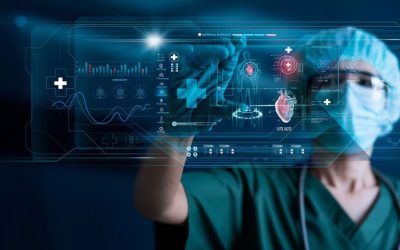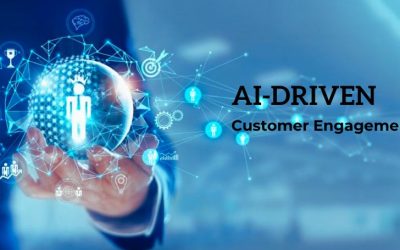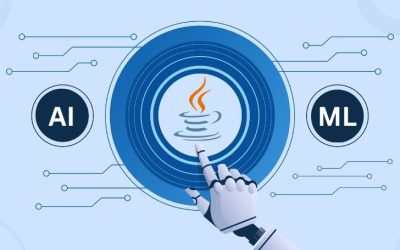Real-time data analysis, artificial intelligence (AI), and machine learning (ML) are used by upcoming AI systems to achieve efficiencies in their improvement process. An AI system aims to simplify human life by automating repetitive tasks using machine learning and AI-driven tools.
This advantageous connection between AI and Machine Learning is changing how we see and associate with innovation. This article delves into the many facets of machine learning and reveals its significance in creating AI systems and their ongoing improvement.
The Historical Context of Machine Learning and AI Systems
It is basic to look back at the verifiable underlying foundations of machine learning and AI to understand the present. The ambitious goal of developing systems that can learn and adapt without explicit programming was the impetus behind the development of machine learning, which began in the middle of the 20th century.
AI Frameworks Rise
The desire to create intelligent machines grew alongside computing power. Early artificial intelligence frameworks were rule-based and missed the mark on flexibility and learning capacities we partner with contemporary AI. The mission for additional dynamic and responsive frameworks prompted the incorporation of AI standards.
Machine Learning: The Bedrock of AI Advancement
Machine Learning is a subset of AI that focuses on creating calculations and models that empower frameworks to learn from information, recognize examples, and make decisions or predictions without explicit programming. The fundamentals include neural networks, supervised and unsupervised learning, and reinforcement learning.
Thinking in New Ways
Supervised learning enables the system to identify patterns in labeled data, whereas supervised learning involves training a model with labeled data. Reinforcement learning introduces reward-based learning in a manner that is analogous to how humans learn from consequences.
How Does Machine Learning Affect AI Frameworks?
Machine learning and artificial intelligence (AI) are closely intertwined, and machine learning plays a huge part in developing and working AI systems.
The Fundamentals of AI Systems
Capacity for Learning: Artificial intelligence (AI) systems can learn from data thanks to machine learning. Rather than being unequivocally modified, computer-based intelligence systems influence AI calculations to break down and adjust to designs inside datasets, empowering them to make expectations, choices, and enhancements over the long run.
Preparing and Flexibility
Model Preparation: Machine learning is fundamental to preparing AI models. During the preparation stage, AI structures use AI calculations to handle enormous datasets, learn designs, and advance their models for explicit assignments. This iterative preparation system permits AI frameworks to adjust and improve consistently.
Upgrading Decision Making
Data-Driven Decision-Making: The ability to examine large scales of information and concentrate significant bodies of knowledge enables artificial intelligence systems to make informed decisions, whether in business, medical care diagnosis, or in a variety of applications.
Automation and Effectiveness
Automated Procedures: AI works with computerization inside AI structures. Models can automate tasks by learning from data, reducing the need for explicit programming. This prompt expanded productivity, particularly in applications like mechanical cycle robotization and independent frameworks.
Personalization and Transformation
Customized Encounters: AI empowers simulated intelligence systems to offer customized encounters. In applications like proposal frameworks, chatbots, and menial helpers, AI calculations dissect client conduct and inclinations, fitting associations and reactions to individual clients.
Complex Critical Thinking
Dealing with Intricacy: AI permits simulated intelligence systems to handle complex issues that may be trying to address with customary rule-based programming. Machine learning AI frameworks can explore and tackle complex issues in various fields by learning and adapting to perplexing examples in information.
Continuous Education
Iterative Improvement: AI upholds constant advancement inside artificial intelligence systems. Models can be retrained as new data arrives, making them more accurate and able to change with the environment. This iterative learning process helps AI Development Services and improvement.
Natural Language Handling (NLP)
Understanding Human Language: Machine Learning is fundamental in AI structures focused on regular language handling. Machine learning algorithms are heavily used in NLP tasks like translation, sentiment analysis, and chatbot interactions to understand and produce human-like language.
Image and Speech Recognition
Pattern Recognition: Machine Learning is significant in picture and discourse acknowledgment inside artificial intelligence systems. AI systems can accurately recognize and interpret visual and auditory information because algorithms learn patterns and features from large datasets.
Adaptability and Flexibility
Adjusting to New Information: Machine learning enables AI systems to adapt to new and evolving information. This flexibility is particularly significant in unique conditions where computer-based intelligence frameworks need to remain applicable and powerful as conditions change.
Predictive Analytics
Gauging and Expectations: By analyzing historical data, these calculations can forecast future patterns, ways of behaving, or results, supporting dynamic cycles in different ventures.
As machine learning strategies continue to advance, they add to the continuous development and improvement of AI frameworks, making them more intelligent, productive, and equipped to tackle many real problems.
The Advancing Scene: ML’s Effect on AI Upgrade
Continuous Learning and Enhancement
One of ML’s main traits is its ability for persistent learning. Powered by machine learning algorithms, AI systems can modify their models and adapt to new data, ensuring optimal performance despite shifting data landscapes.
Profound Learning and Brain Organizations
AI capabilities have significantly advanced due to integrating deep learning, a subset of machine learning. AI systems can better handle intricate tasks like image recognition, natural language processing, and autonomous decision-making thanks to neural networks, which are based on the architecture of the human brain and enable them to process and comprehend complex data hierarchies.
Real-World Applications: Machine Learning’s Effect Across Industries
Medical Services
Machine Learning Development Services offers medical services by supporting diagnostics, customized medication, and proactive investigation. Medical data is analyzed by AI systems based on machine learning algorithms to identify potential diseases, suggest treatment plans, and improve patient care.
Finance
Machine learning is employed to identify misrepresentations, evaluate risks, and conduct algorithmic exchange in financial terms. Artificial intelligence frameworks persistently gain from market patterns, authentic information, and client conduct, giving constant bits of knowledge and further developing dynamic cycles.
Manufacturing and Industry 4.0
The assembly of machine learning and AI is reshaping fabricating through predictive maintenance, quality control, and independent creation. Smart factories use AI systems to improve operational efficiency, reduce downtime, and optimize processes.
The Future Skyline: Machine Learning Unknown Regions in AI Frameworks
Progressions in Support Learning
Support learning development is ready to achieve headways in independent frameworks, advanced mechanics, and dynamic cycles. AI frameworks, directed by support learning standards, may explore complex conditions with expanded independence and versatility.
Explainable Artificial Intelligence (XAI)
Tending to the test of artificial intelligence interpretability, the idea of Explainable AI (XAI) is acquiring conspicuousness. XAI expects to make AI frameworks more straightforward, furnishing clients and partners with experiences in the dynamic cycles of perplexing AI models.
AI for Imagination
An exciting new frontier exists at the intersection of creativity and machine learning. AI frameworks are being created continuously to assist and broaden human imagination in fields such as craftsmanship, music, and planning. The joint effort between human resourcefulness and AI calculations holds the possibility to rethink the inventive strategy.
Conclusion
Overall, the role of machine learning in the development and improvement of AI frameworks is similar to that of a harmonious orchestra, where each note adds up to create an extraordinary work of art. From the essential preparation of AI models to the continuous improvement of versatile frameworks, AI’s effect is significant and multi-layered. As we stand on the slope of unfamiliar domains in artificial intelligence improvement, directed by the unique exchange of AI standards, what’s in store guarantees a scene where shrewd frameworks meet as well as surpass our assumptions, introducing a period where the limits of plausibility are consistently re-imagined.







